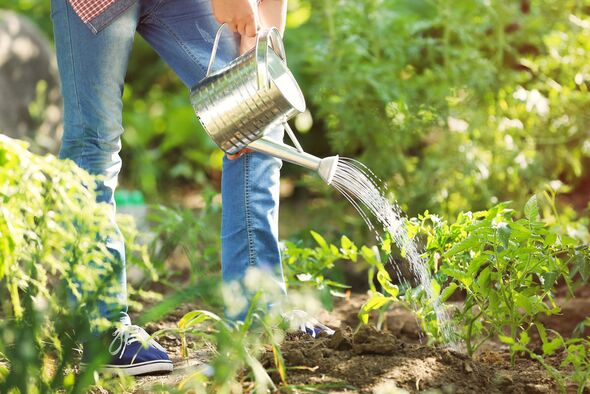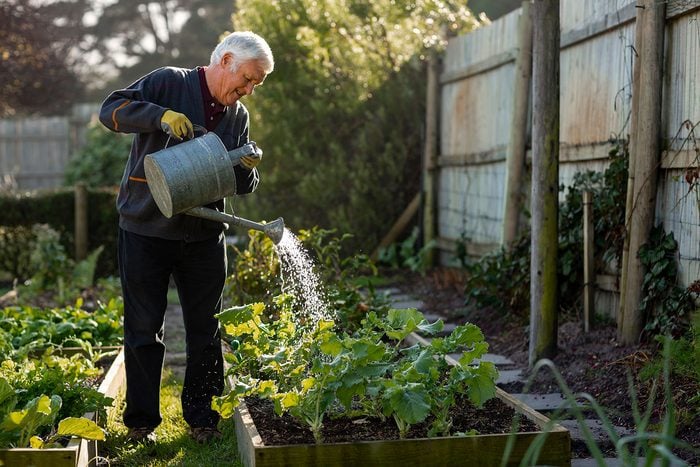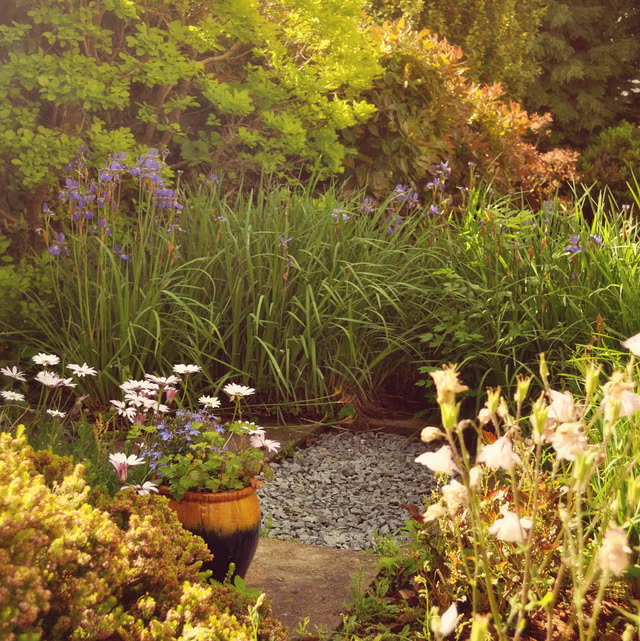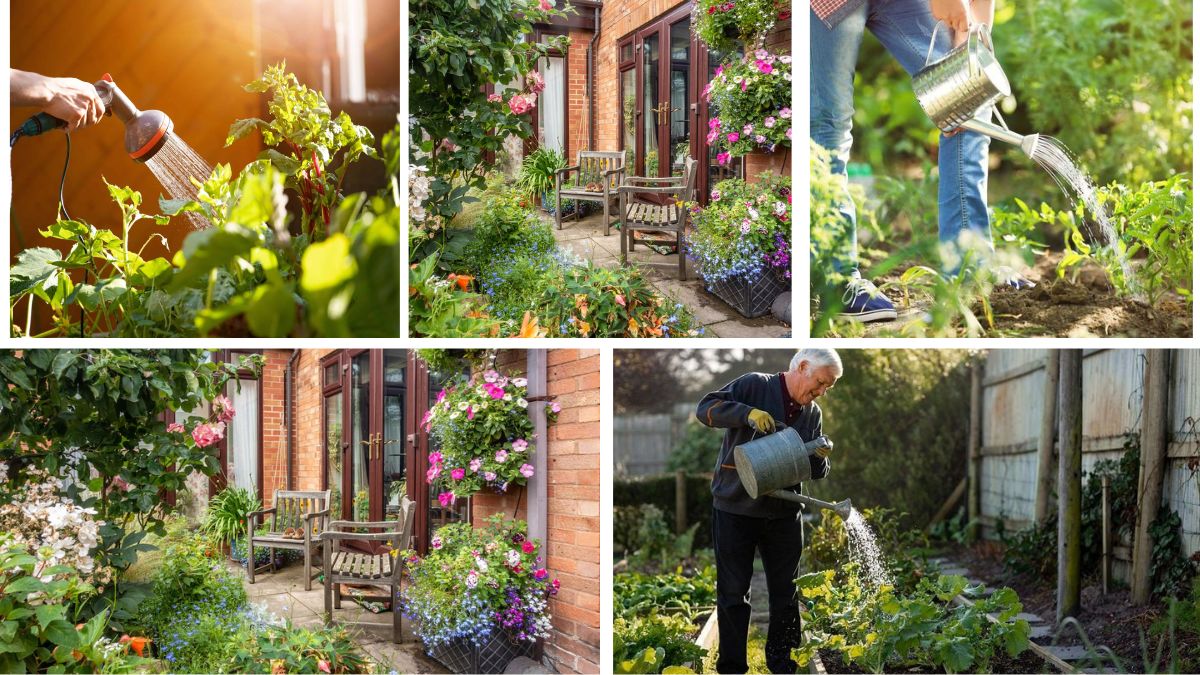Summer heatwaves can be challenging for both plants and gardeners. Extended periods of high temperatures, intense sunlight, and dry conditions can stress plants, cause wilting, reduce blooms, and even lead to plant death. However, with careful planning, strategic care, and timely interventions, you can keep your garden thriving even in extreme heat.
In this article, we’ll explore practical tips, watering strategies, plant selection, and heatwave garden care techniques to protect your plants and maintain a vibrant, healthy garden during the hottest days of the year.
Understanding the Impact of Heatwaves on Gardens

Heatwaves affect gardens in multiple ways:
- Water Stress: High temperatures increase evaporation, causing soil and plants to dry out quickly.
- Sun Scorch: Direct sunlight can damage leaves, flowers, and fruits.
- Nutrient Deficiency: Rapid growth under heat stress can deplete soil nutrients.
- Pest and Disease Pressure: Heat-stressed plants are more vulnerable to pests and diseases.
By understanding these effects, gardeners can take proactive measures to mitigate damage and protect their plants.
1. Water Wisely and Efficiently
Watering is the most critical aspect of gardening during a heatwave.
Best Practices:
- Water Early or Late: Water in the early morning or late evening to reduce evaporation and allow roots to absorb moisture.
- Deep Watering: Water deeply rather than shallowly to encourage deep root growth, which helps plants survive drought.
- Avoid Wetting Foliage: Water at the base of plants to reduce the risk of fungal diseases.
- Use Soaker Hoses or Drip Irrigation: These methods deliver water directly to roots, conserving water and reducing evaporation.
Mulching Benefits
- Apply 2–4 inches of organic mulch (straw, wood chips, shredded leaves) around plants.
- Mulch retains soil moisture, moderates soil temperature, and suppresses weeds.
- Mulching also protects shallow roots from heat stress.
2. Protect Plants From Intense Sun

Even heat-tolerant plants can suffer from sun scorch and leaf burn.
Shade Strategies:
- Use shade cloths or garden netting during the hottest part of the day.
- Plant taller companion plants to create natural shade for smaller, sensitive plants.
- Temporary row covers or umbrellas can protect young seedlings.
Leaf Care:
- Avoid pruning plants during peak heat, as this can increase sun exposure and stress.
- Monitor for leaf curling, wilting, or browning as indicators of heat stress.
3. Choose Heat-Tolerant Plants
Selecting the right plants is essential for heatwave resilience. Some plants naturally withstand high temperatures and dry conditions:
- Vegetables: Okra, peppers, eggplants, sweet potatoes, and tomatoes (heat-tolerant varieties)
- Flowers: Zinnias, marigolds, sunflowers, portulacas, and lantanas
- Herbs: Rosemary, thyme, oregano, lavender, and sage
Planting heat-tolerant varieties reduces maintenance and ensures your garden remains colorful and productive even during extreme temperatures.
4. Optimize Soil Health

Healthy soil helps plants withstand heat stress and drought.
Soil Improvement Tips:
- Incorporate compost or organic matter to improve water retention and soil structure.
- Use mulches and ground covers to protect soil from direct sun and retain moisture.
- Avoid fertilizing during peak heat, as excess nutrients can stress plants further.
Good soil acts as a buffer against temperature extremes and helps plants maintain strong roots.
5. Maintain Proper Plant Spacing
Crowded plants compete for water, nutrients, and airflow, increasing stress during heatwaves.
Spacing Tips:
- Ensure adequate spacing according to plant size and growth habit.
- Proper airflow reduces humidity buildup, lowering the risk of fungal diseases.
- Consider succession planting to stagger growth and reduce competition.
Well-spaced plants establish stronger roots and resist heat stress better than densely packed gardens.
6. Implement Smart Water-Saving Techniques
During prolonged heatwaves, water conservation is crucial.
Effective Methods:
- Rain Barrels: Collect rainwater for irrigation during dry spells.
- Greywater Use: Reuse kitchen or bathroom water safely for garden irrigation.
- Self-Watering Containers: Ideal for potted plants, keeping soil consistently moist.
- Hydrogels: Soil additives that retain water and release it slowly to plant roots.
Efficient water use ensures your garden survives heatwaves without wasting precious resources.
7. Regular Monitoring and Care

During extreme heat, frequent monitoring is key:
- Check plants daily for wilting, leaf burn, or pest infestations.
- Remove damaged or dead foliage to prevent disease spread.
- Harvest vegetables and herbs early in the morning when they are hydrated and fresh.
- Adjust watering and shading strategies based on changing weather patterns.
Proactive attention can prevent small issues from becoming major problems during heatwaves.
8. Protect Containers and Potted Plants
Potted plants are more vulnerable to heat due to limited soil volume.
Tips for Container Gardening During Heat:
- Move pots to shaded areas or under trees during the hottest part of the day.
- Use insulated or light-colored pots to reduce soil temperature.
- Group pots together to create a microclimate and retain moisture.
- Consider self-watering systems or frequent monitoring to prevent drying out.
Container care ensures your balcony or patio garden remains lush and vibrant even in extreme heat.
9. Encourage Pollinators and Beneficial Insects
Heatwaves can stress pollinators, affecting flower production and fruit set.
- Provide shallow water dishes with pebbles for pollinators to drink safely.
- Plant nectar-rich flowers that bloom in summer to attract bees, butterflies, and beneficial insects.
- Avoid pesticides during heatwaves, as stressed insects are more vulnerable.
Supporting pollinators ensures your garden continues to thrive and produce during extreme temperatures.
10. Plan for Recovery After the Heatwave

Even with precautions, some plants may show signs of stress after a heatwave.
- Water deeply once temperatures cool.
- Prune damaged leaves or branches to stimulate new growth.
- Apply compost or organic mulch to replenish nutrients and protect soil.
- Consider planting additional heat-tolerant varieties for continued summer interest.
Post-heatwave care helps your garden bounce back quickly and remain productive.
Conclusion
Heatwaves can pose significant challenges, but with strategic planning and proactive care, your garden can thrive despite high temperatures. By watering wisely, protecting plants from sun, selecting heat-tolerant species, improving soil, and monitoring regularly, you ensure that your garden remains lush, colorful, and productive.
Container and potted plants, proper spacing, mulching, and pollinator support further enhance resilience during extreme heat. With thoughtful preparation and attentive care, your garden can withstand heatwaves and continue to flourish, providing beauty, fresh produce, and enjoyment throughout the hottest months of the year.
By implementing these strategies, you can create a summer garden that remains vibrant, healthy, and resilient, even when the mercury rises.





